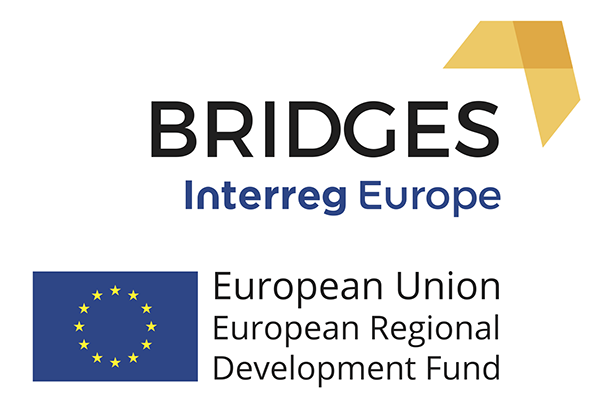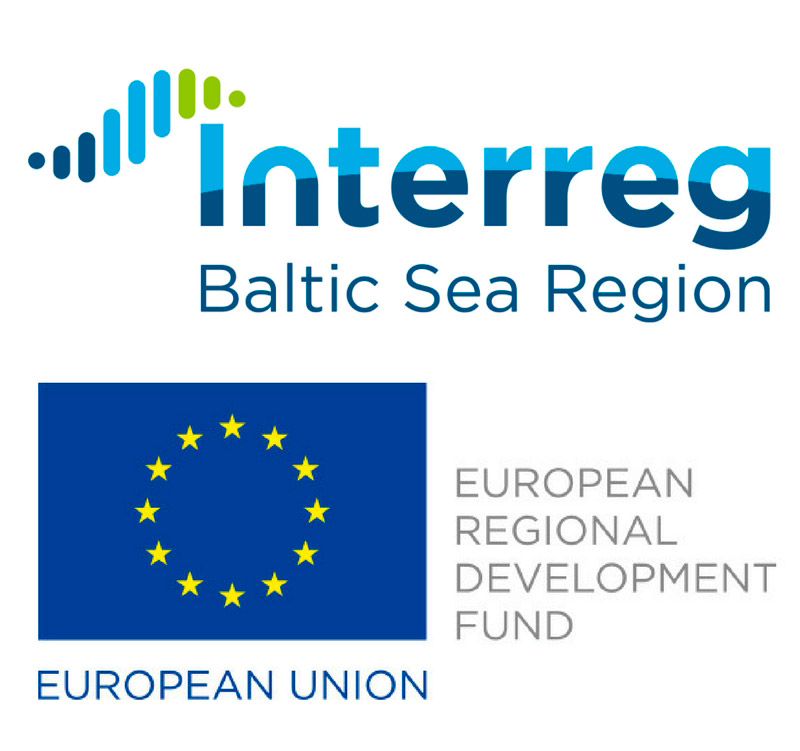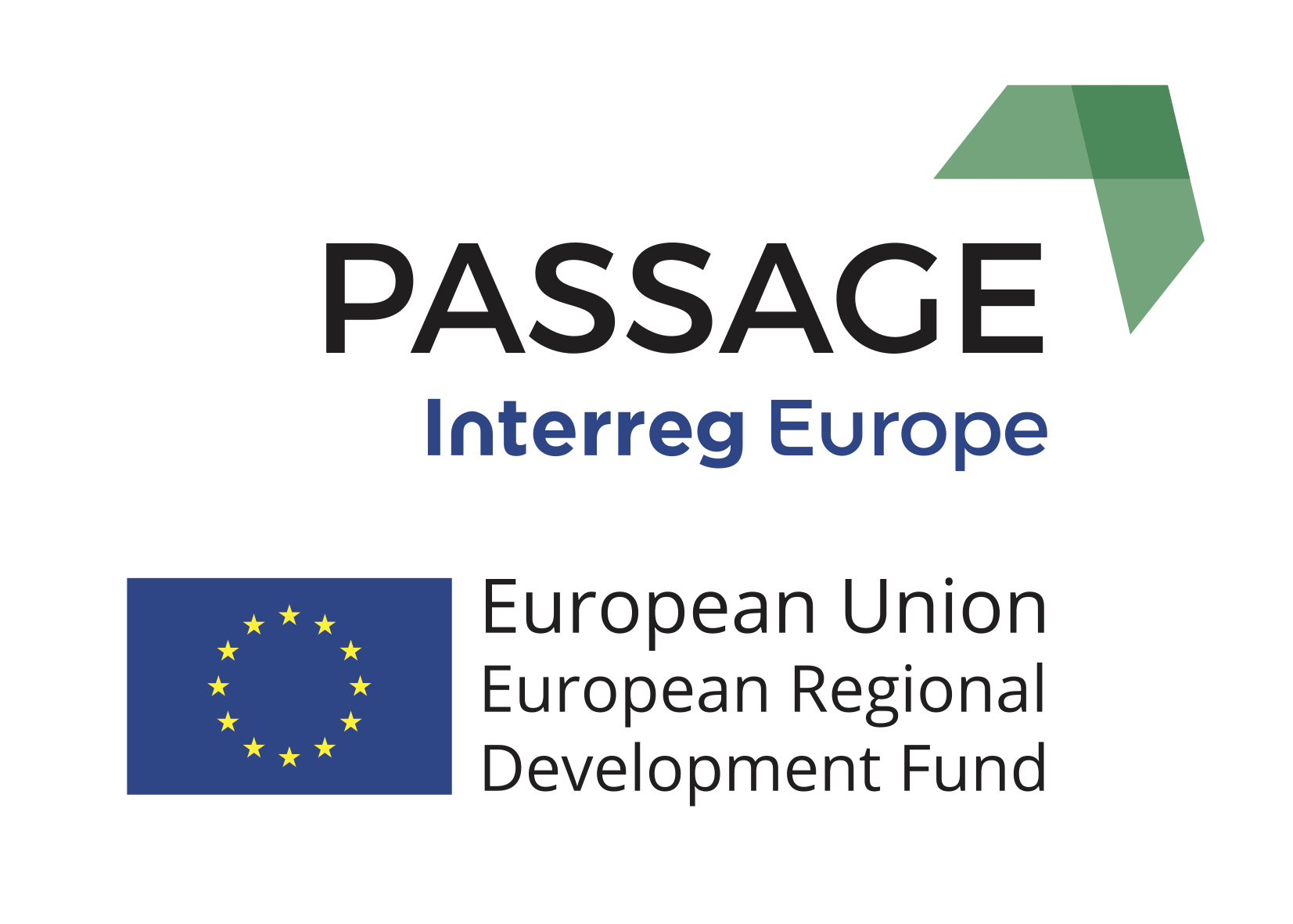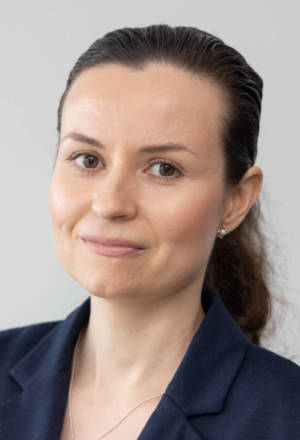
This page include results and material from previous, internationally significant projects of the Helsinki-Uusimaa Regional Council to be used freely.
The Helsinki-Uusimaa Regional Council was one of nine BRIDGES project partners. BRIDGES (Bridging competence infrastructure gaps and speeding up growth and jobs delivery in regions) was financed by the European Union’s Interreg Europe programme.(You are transferring to another service)
The overall objective of the BRIDGES project was to improve the RIS3 governance and implementation. The priorities were bio-economy growth possibilities and cleantech.
Some of the partners were forerunner regions, others were not yet so far. Strengthening the regional research infrastructures and the competence areas was focused upon in the forerunner regions, as in Helsinki-Uusimaa. Best practices were shared among the partners and action plans were made upon these.
This five-year project (2016-2021) was led by Kainuun Etu Oy and included partners from Poland, Greece, Slovenia, Hungary and Spain. The project budget was about 2 million euros.
BRIDGES at the Interreg Europe website(You are transferring to another service)

The BSR Access platform project facilitated innovative and sustainable transport by creating linkages between traditional infrastructure nodes and smart transport solutions to further develop the TEN-T Core Network Corridors and contributes to sustainable growth in the Baltic Sea Region. Synergies were created by collecting, benchmarking and disseminating best practice cases in transport interoperability.
The project had a total budget of 1 million euros, received co-funding from the Interreg Baltic Sea Region Programme. This three-year project (2018-2022) was led by the Helsinki-Uusimaa Regional Council.

The Helsinki-Uusimaa Regional Council was participating in the Finnish Environment Institute’s CANEMURE project, promoting actions to mitigate climate change. CANEMURE stands for “Towards Carbon Neutral Municipalities and Regions in Finland”. 22 organisations were participating in this six-year EU project: municipalities and municipal organisations, research institutions and companies.
The aim of the project was to promote smart and low-carbon transport, increase the production of distributed renewable energy and improve the energy efficiency of buildings. In addition, processes creating a sustainable urban structure and the conditions for low-carbon production and consumption were supported.
In this project, the role of the Helsinki-Uusimaa Regional Council was to promote regional cooperation and create a roadmap for a climate neutral Helsinki-Uusimaa, as to reach the national objectives for climate change. We influenced the decision-making in the region, and were also promoting climate awareness.
Apart from the Finnish Environment Institute, main project partners were Tampere University, Natural Resources Institute Finland and the Finnish Meteorological Institute. In total, the budget was 15.3 million euros. The EU Life programme stood for most of the funding; i.e. 9.1 million euros.

The FinEst Link project, part-funded by the Central Baltic Program, carried out a feasibility study of the Helsinki–Tallinn fixed link in 2016–2018. The feasibility study focused on the technical, economic and business viability of the railway tunnel vision. The final report of the FinEst Link project was published in Tallinn in February 2018.
The project was led by Helsinki-Uusimaa Regional Council in partnership with the Cities of Helsinki and Tallinn, Harju County, Finnish Transport Agency and the Estonian Ministry of Economy and Communications.
Project results
The results of the FinEst Link project state that a fast connection between Helsinki and Tallinn could bring major regional, national benefits and growth potential for Europe. The building and boring of the tunnel could start in 2025 and be built in 15 years. This means the tunnel would be ready for passengers and cargo in 2040.
The investment cost of the railway tunnel has been estimated at 13–20 billion euros. The FinEst Link project uses a mean value of 16 billion euros. The amount includes, for instance, tunnel construction, two artificial islands, planning costs, stations, terminals and depots excluding however the costs for rolling stock.
The tunnel project could be economically feasible by using a public-private partnership model where the private sector finances the building of the tunnel, and an EU grant would be needed to cover 40 % of the costs.
Together Helsinki and Tallinn form an economic region of approximately 1,5 million inhabitants. The railway tunnel would help create a metropolitan twin-city region where people, goods and services could move around easily.
The Helsinki–Tallinn tunnel connection would cut the travel time between the two cities down to 30 minutes. The tunnel alignment would be 103 kilometers long which by the current standards would be the longest undersea railway tunnel in the world.
The FinEst Link project analysed the economic and technical feasibility of a railway tunnel for passenger and cargo traffic using a conventional rail operation concept but also asked for ideas from new technology developers. The project received several optional ideas and solutions.
Find out more about the project results:
- FinEst Link Feasibility Study – Final report (pdf)
- The FinEst Link brochure (pdf)
- Video presenting the key results of the project (length 12 minutes)
Related projects
FinEst Smart Mobility
- The FinEst Smart Mobility project improves the flow of traffic from Tallinn’s Old City Harbour to Helsinki’s Jätkäsaari harbor, in particular the passengers’ customer experience.
- The work is conducted with various smart mobility experiments such as “park and ride” and control of heavy traffic.
- The plans also include improvements in the connections from the harbours to Helsinki Airport and to the Tallinn ring road.
- The project has started in September 2016 and it is partly funded by the Central Baltic Interreg Programme.
TalsinkiFix
TalsinkiFix which looked into the Fixed Link Helsinki-Tallinn and executed the pre-feasibility study.
Rail Baltica Growth Corridor
Rail Baltica Growth Corridor which lobbied for Rail Baltic and looked into the accessibility of big cities in the Baltic Sea Region.

The Helsinki-Uusimaa Circular Hub brought together various pilot projects (PPs), along with other projects, and certainly not forgetting the actors. It increased their cooperation and offered the most recent research information and possibilities available for companies. The Hub also helped to start new regional PPs and other projects.
The Helsinki-Uusimaa Hub was a community with municipalities, various organisations, companies, research institutions and experts. It was a shared project of the Helsinki-Uusimaa Regional Council and CLIC Innovation.
This 3-year project was implemented during 2023–2025. It received national funding for regional sustainable growth and vitality (AKKE) and consequently supported the enforce of the national program focused on promoting a circular economy. Helsinki-Uusimaa was chosen as a Circular Cities and Regions Pilot (CCRI), related to an initiative by the European Commission.
The activities of the Circular Hub will continue, among others, with the project KOPPI: Regional home bases – supporting and piloting the green deal in circular economy.
KOPPI: Regional home bases – supporting and piloting the green deal in circular economy (in Finnish)
Website of the Circular Hub(You are transferring to another service)
Publication Stories from the Circular Hub(You are transferring to another service)
Video about the Circular Hub (You are transferring to another service)

Initially, the iEER project was ongoing 2016–2020. The project defined smart paths and solutions for partners to boost and orchestrate regional entrepreneurship ecosystems supporting young entrepreneurs. The Helsinki-Uusimaa Regional Council was the lead partner of the project. However, in search of a sustainable and socially inclusive recovery from the COVID-19 crisis, iEER has been granted with additional fundings from Interreg Europe for 2021–2022.
Project info
The Helsinki-Uusimaa Regional Council was the lead partner of the iEER project 2016–2020 called Boostinginnovative Entrepreneurial Ecosystem in Regions for Young Entrepreneurs, defining smart paths and solutions for partners to boost and orchestrate regional entrepreneurship ecosystems supporting young entrepreneurs.
That project had already been ended, but as the COVID-19 crisis weakened the European economy and the measures to tackle this were revolutionized, it was granted additional funding from Interreg Europe Programme for 2021–2022.
This time the project supported a sustainable and socially inclusive recovery from the coronavirus pandemic. It aimed at learning and sharing practices:
- a regional recovery is possible among entrepreneurs and stakeholders by bringing back some enthusiasm
- digitalisation and distant work can support sustainable and innovative business
- we can recover and strengthen regional growth by encouraging entrepreneurs to implement the environmental, social, and governance criteria (ESG) and the guiding principles of sustainable development.
It was defined by a striving to acknowledge necessary needs, to find solutions and to share them with other regions, to increase competence and finally to start with actions needed.
Supporting young entrepreneurs by best practices and peer learning
This further project had a budget of 490,000 euros. The Helsinki-Uusimaa Regional Council was the lead partner. The Laurea University of Applied Sciences is another partner from Helsinki-Uusimaa. Other partners became from Poland, Germany, Italy, the UK, Spain and Ireland.
The project received EU Interreg Europe Programme funding, thus initially bringing together ten different regions around Europe. Eight regions participated in the new period. Most of the regions participating in the iEER project has been awarded an EER label (European Entrepreneurial Region).
Helsinki-Uusimaa is the only region to be awarded an EER label twice: first in 2012 for its qualifications in promoting Young Entrepreneurship, and the second time around, in 2021–2022 for qualifications in Entrepreneurship for a Sustainable Recovery. Exchanging best practices and peer learning were utilized in the project.
The earlier project of 2016–2020 had a total budget of 2,3 billion euros. It improved the cooperation between actors in different European regions in supporting young entrepreneurship, as well as the regional innovation capability and competitiveness by offering services to young entrepreneurs. Cooperating partners were for instance universities, business services of cities andenterprise accelerators.
iEER at Interreg Europe website(You are transferring to another service)

The Helsinki-Uusimaa Regional Council was one of nine Medtech4 Europe (Optimizing the impact of public policies in favour of research and innovation facilities in the field of medical technologies) project partners. The project was financed by the European Union’s Interreg Europe Programme.
The overall objective of the Medtech4 Europeproject was to improve public policies to be more adapted to the specificities of the medical technology domain.
Medical technologies are bringing solutions to reduce healthcare costs in a context of ageing population in Europe. With the emergence of new and cross-sectorial technologies, it is one of the most innovative high-tech sectors and faces strong global competition.
In the project, the Helsinki-Uusimaa Region was collaborating in the field of smart specialisation and identifying best technological practises for the ageing population.
This four and a half year project (2018–2022) was led by Auvergne-Rhône-Alpes and includes partners from Denmark, France, Finland, Germany, Italy, Hungary, Netherlands and Poland. The project budget was approximately 2 million euros.

The Interreg Baltic Sea Region Programme financed North Sea Baltic Connector of Regions (NSB CoRe project) was led by the Helsinki-Uusimaa Regional Council. It advanced spatial and transport development along the NSB TEN-T Core Network Corridor North Sea – Baltic to ensure the best possible profit of transport investments, and its objective was to create a well synchronized chain of cities.
The Helsinki-Uusimaa Regional Council had a strong interest in improving the international transport connections of its own region and consequently, also the national accessibility of Finland.
As an outcome of transnational discussions within the project, it was possible to bring the outputs of grassroot level activities to a wider distribution among policymakers in multi-level governance of spatial and transport planning.
The four main priorities of the project were logistics, long distance commuter services, transnational community building and transport branding.
- In logistics, the project advanced intermodal freight logistics, that is multiple modes of transportation in a single supply chain.
- In long distance commuting, the project underlined the need of transport between cities along the Corridor.
- In transnational community building, the project consisted of regional planning along the entire Corridor, aiming at a strategy for joint policy making in spatial and transport development for the entire Eastern Baltic Sea Region.
- In transport branding, the project used the mega project of Rail Baltica as a case.
Comprehensive three-year project
The project of 2016–2019 had a total budget of 3.3 billion euros and it involved sixteen partners from Finland, Estonia, Latvia, Lithuania, Poland and Germany. In addition to the Helsinki-Uusimaa Regional Council in Finland, the cities of Helsinki and Hämeenlinna participated in the project, as well. Other Finnish stakeholders were the Kvarken Council and the logistics cluster Limowa.
40 associate partners were supporting the project, also from the Netherlands, Sweden and Russia. These were cities, regions, ministries and various operators in transportation and logistics.
Final project report
Project library

The project PASSAGE (Public AuthoritieS Supporting low-cArbon Growth in European maritime border regions) promoted low-carbon economies in European strait regions. The Helsinki-Uusimaa Regional Council and the Union of Harju County Municipalities in Estonia represented the Gulf of Finland in this project.
Sea straits are important hubs of traffic, and they have an especially large impact on carbon emissions. Therefore they are also an important development object in order to reach the goal of carbon neutrality.
The project focused on three themes:
- Transport
- Environment and Attractiveness of
- Regions Entrepreneurship and Social Innovations
In the first phase of the project, a cross-border action plan made with the most important interest groups in order to reach the goals. During the project the strait regions learned the practices of each other, and the best of them were transferred into a regional level. The low-carbon theme was also being promoted by influencing the different focuses of various EU Programmes.
This four-year project was implemented during 2016–2020. The final two years used for a thorough sharing of results where collaboration between the Uusimaa and Harju regions was deepened in the field of carbon neutrality and project’s policy recommendations took forward.
Five strait regions and 11 partners took part in the project. Apart from Finland and Estonia, the partners came from Denmark, Great Britain, France, Italy, Greece and Albania. The lead partner was the Pas-de-Clais County Council from France.
The project received funding from the EU Interreg Europe Programme with a total budget of 1.9 million euros.
Passage at the Interreg Europe website(You are transferring to another service)

The Helsinki-Uusimaa Regional Council was an acting partner in the Plan4Blue project (Maritime Spatial Planning for Sustainable Blue Economies).
By developing options and methods for a sustainable growth in further cross-border collaboration, the project supported the Finnish and Estonian maritime spatial planning processes. The project supported a growth in the marine and maritime sectors emphasizing the need to find a balance between economic, social and environmental goals.
The Plan4Blue project produced Blue Economy scenarios, and spatial analysis of potentials and risks are made. The possibilities of and models for implementing the scenarios were studied from the aspects of both maritime spatial, as well as, land use planning. This was also a possibility to bring together maritime spatial planning actors from Finland and Estonia.
This project (2016–2019) had a total budget of about 2 million euros, receiving funding from the EU Interreg Central Baltic Programme. The budget set up by The Helsinki-Uusimaa Regional Council was 168 000 euros.
Finnish-Estonian Collaboration
The Finnish Environment Institute was the leading partner of the Plan4Blue project. Apart from the Council, the Finnish partners were The Regional Council of Southwest Finland and the University of Turku, the Estonian partners were the University of Tartu and the Baltic Environment Forum Estonia.
Other partners were the Estonian Ministry of Finance and the county administrations of Lääne-Viru, Harju and Ida-Viru. Additionally, a broad collaboration took part between the stakeholders of maritime spatial planning.

Innovative mobility solutions were initiated in the RECIPROCITY project of the EU Horizon 2020 Programme to tackle the challenges of urbanisation, climate change and digitalisation.
The aim of the project was to connect urban and rural regions, and to make them multimodal nodes of use for intelligent and clean mobility. It included new partnerships, networking and knowledge sharing.
The consortium consisted of 10 partners including clusters and research institutions in Europe and Turkey, as well as the ERRIN network. R-Tech, E-Mobility Cluster Regensburg from Bavaria in Germany was the project coordinator.
In this project, the Helsinki-Uusimaa Regional Council was boosting joint actions of cities, municipalities, investors and companies. Forum Virium Helsinki, the cities of Helsinki, Lohja, Porvoo and Riihimäki, Helsinki Metropolia University of Applied Sciences as well as the Helsinki based companies CoReorient Oy and Deal Comp Oy were partners.
The project was funded by the European Union’s “Horizon 2020 Framework Programme for Research and Development” with approximately 1.5 million euros in subsidy, and it was carried out between 2021 and 2023.
The RECIPROCITY website and the Knowledge Centre contain all materials produced by the project.
Scandria®2Act fostered clean multimodal transport to increase connectivity and competitiveness in the Central and Northern Europe. The project followed an initiative in the Baltic Sea Region on the Scandinavian-Mediterranean TEN-T Core Network Corridor.
This three-year project focused on clean fuels and transport services, both of goods and passengers. It also promoted strategic and operational efforts to develop energy-efficient transport.
The Joint Spatial Planning Department Berlin-Brandenburg(You are transferring to another service) in Germany was the lead partner. The Helsinki-Uusimaa Council was a project partner, contributing to the administration of the core network corridor. 19 partners from Finland, Sweden, Norway, Germany and Denmark were involved in this project.
Scandria®2Act (2016–2019) had a total budget of about 3,6 million euros, receiving a part of the funding from the EU Interreg Central Baltic Programme. It was carried out in a very close cooperation with the NSB CoRe project, in which Helsinki-Uusimaa Regional Council was the lead partner.

During spring 2022, the Helsinki-Uusimaa Regional Council launched a programme Science Meets Regions in Helsinki-Uusimaa. The Council striveds to develop the region and its wellbeing in a new way, both nationally and internationally. The programme arranged in cooperation with the Joint Research Center of the European Commission aims to promote the spearheading of the objectives in the current Helsinki-Uusimaa Regional Programme by decision-making based on various data.
“Our research, development and innovations produce solutions to be utilized to meet many challenges in synergy with political, legislative and cultural changes.” Mr Ossi Savolainen, Regional Mayor in Helsinki-Uusimaa
Top ranking programme with many events – aiming at innovations
The launching of the Science Meets Regions Programme on spring brought EU actors and decision-makers of Helsinki-Uusimaa together with representatives of science, art, business, the public and private sector. The programme went on with three innovation camps, with themes from the spearheading of the objectives in the Regional Programme for 2030. The programme culminated with the final seminar in the late autumn. Thoughts and actions around the spearheads were put together.
The long-term objectives of the programme are innovations combining scientific and artistic, that is experience-based, data from various fields.
We have invited regional businesses, scientific communities and municipalities to achieve climate neutrality, attract investments and create jobs together. We have approached comprehensive issues by bringing different actors together, to find new innovative solutions. Mr Markku Markkula, President of the Helsinki-Uusimaa Regional Board
Towards a good future through collaboration and changing the direction for regional policy
The programme Science Meets Regions was a good starting point for the process of further enchancing wellbeing across Finland while generating sustainable growth. The Helsinki-Uusimaa Region has unique potential for sustainable growth. In many European and global comparisons, the region has been at the top. Its strengths are associated with wellbeing, the high level of education and innovations.
However, there are also areas in the region that need development, like sustainability and employment. Putting the strengths and possibilities of Helsinki-Uusimaa to use requires a closer collaboration between various regional actors. Nationally, this means a move of resources to the Metropolitan Region.
“The Science Meets Regions process has made it clear that the objectives of the Helsinki-Uusimaa Regional Programme work well for the future of our region. A successful Finland in the future needs an understanding that opportunities for the growth of the whole country are concentrated, above all, in densely populated growth areas. By working more systematically and in long-term collaboration, with the guidance of the Science Meets Regions programme, we can also set a good example for the rest of the world.” Mr Ossi Savolainen, Regional Mayor
The Smart-up BSR Project (Improving smart specialisation implementation through orchestrating innovation hubs) promoted the regional implementation of strategies for smart specialisation, and enhanced the cooperation between regions.
Regions from nine different countries evaluated their strategies for smart specialisation and updated their implementation plans. The project was carried out trough peer learning, innovation camps and pilot experiments.
The project utilized the smart specialisation expertise of EU’s Joint Research Center (JRC) and the European Committee of the Regions. The project also developed different methods for participation and cooperation and prepared for pilot projects conducted in cooperation between the regions.
The pilot projects focused on the following themes:
- active healthy ageing
- smart city
- climate change
- circular and sharing economy
The project’s main partner was the Aalto University. Another Finnish project partner was the Kotka-Hamina Regional Development Company Cursor Oy. Furthermore, the project involved partners from Estonia, Latvia, Lithuania, Germany, Denmark, Poland and Russia.
Helsinki-Uusimaa Region was responsible for SWOT analyses and scenarios concerning smart specialisation. Uusimaa Region was also in charge of planning a pilot project between the regions on the theme of active healthy ageing, and of arranging a final conference.
The Smart-up BSR project had a total budget of 2.4 million euros, received co-funding from the EU Interreg Baltic Sea Programme. The project was carried out between 2017 and 2020.
Project at the Interreg Europe website(You are transferring to another service)

The Helsinki-Uusimaa Regional Council was one of seven project partners collaborating on the project 40Ready – Strengthening SME capacity to engage in Industry 4.0. The project was financed by the European Union’s Interreg Europe Programme.
The overall objective of the 40readyproject was to prepare SMEs better for the I4 transition. With SMEs, we referred to entrepreneurs, owners, managers and staff at all levels, who need better capabilites to take on the new challenges of digital transformation and I4.
40Ready regions aimed to become better placed for a successful, sustainable and profitable application of I4. They supported their SMEs to become more competitive, while maintaining and creating jobs.
Regions were keen to ensure that their strategies are coherent with this new line of integrated, digital development. Also in the Helsinki-Uusimaa Region, SMEs played a significant role in the regional economy and employ a majority of the workforce.
The digital transformation for SME´s was not only technological R&D. It was also about cultural mind-set, training processes, skills and qualifications. On this notion, the Helsinki-Uusimaa Region was especially keen to collaborate in the field of smart specialisation and identifying best practises.
Policywise, the project targeted both ESF, which can support vocational and professional capacity building, and ERDF, for support measures in technological, organisational and skill development. Improvements to these policies could go far to ensuring that SMEs, and people working for them, are able to embrace and benefit from industrial digitalisation and automation.
The project (8/2019–1/2023) was led by Agency for the development of Empolese Valdesa (ASEV) and includes partners from Belgium/Wallonia, Poland/Silesia, Spain/Navarra, Italy/Toscana, Romania/Bucharest-Ilfov and Lithuania/ESFA.
The project budget was approximately 1.4 million euros.


Projects
At the Helsinki-Uusimaa Regional Council, we initiate important regional development projects. We find and bring together the most suitable partners and financiers for projects born …
For more information, please contact:

Nina Pakarinen
Senior Adviser
nina.pakarinen@uudenmaanliitto.fi
Development of projects, management of project portfolio
This page was last updated: 2.7.2025